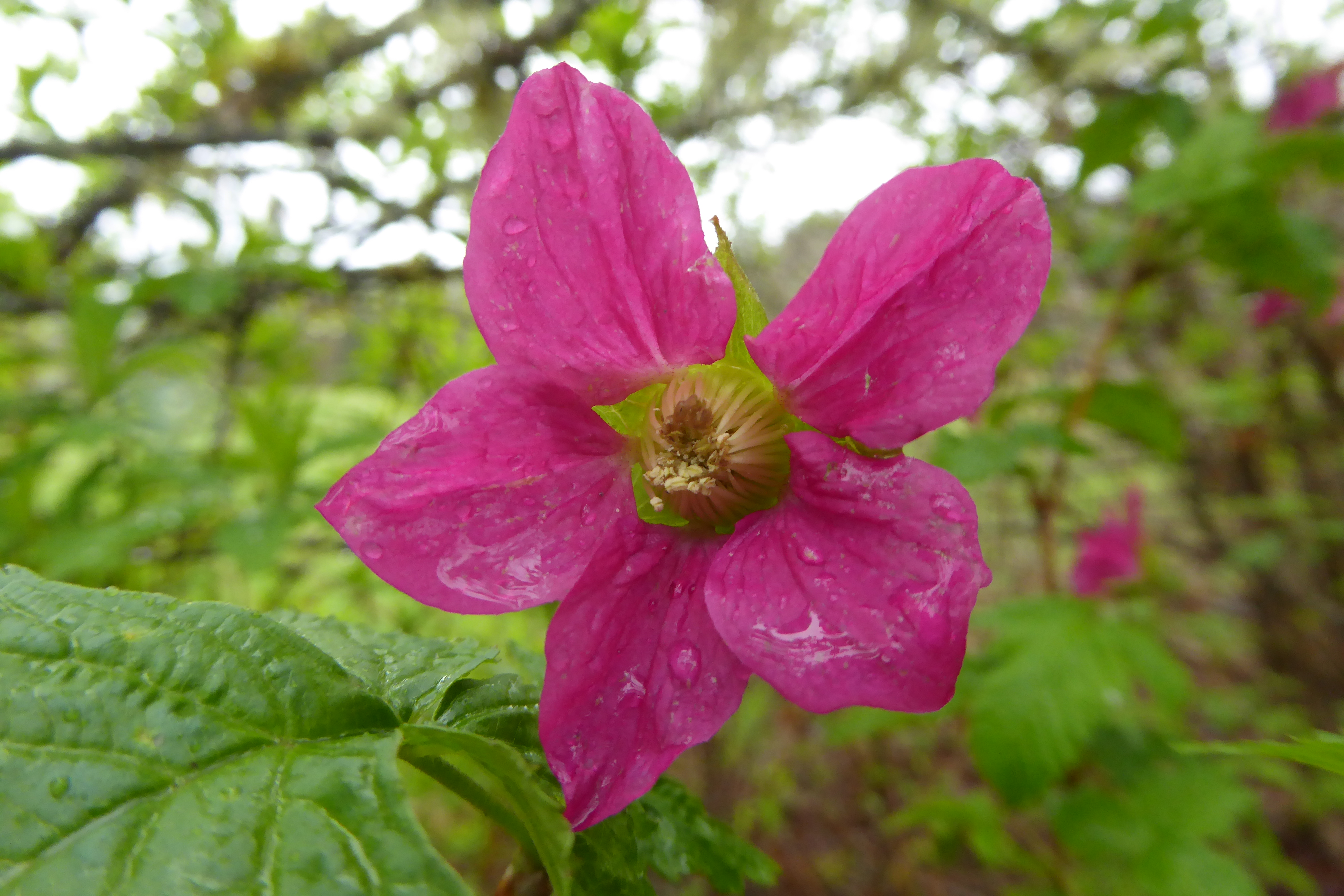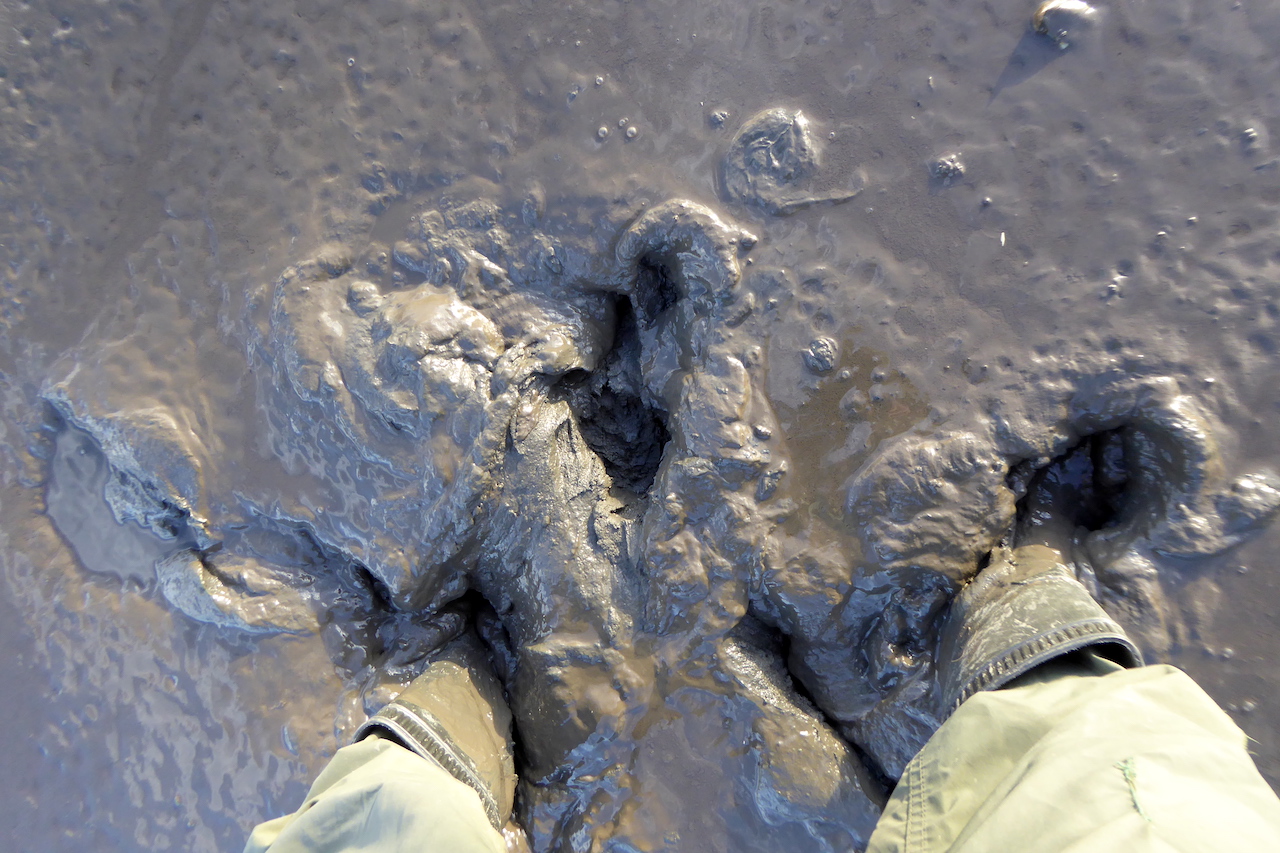In the northern third of Maine spring weather is fitful, and I sometimes wonder if winter will ever break its hold. Eventually, though, usually in mid March, snow cover begins to thin as the sun travels higher in the sky and daylight hours lengthen. Around this time, maple sap runs heavy. As April arrives the hazelnut, speckled alder, and aspen (or “popples” as they are locally called) break bud as the ground thaws in earnest. I might see my first dark-eyed junco of the year about that time, followed by flickers and sapsuckers who drum from the trees as they establish nesting territories. Wood frogs, spring peepers, and salamanders wake from hibernation and migrate to their breeding pools on rainy nights. The warblers return in May along with early ephemeral wildflowers and the first expanding tree leaves in the canopy.
Although I welcome these changes like a reunion with friends, there’s one event beyond any other (even the appearance of biting insects), that to me signals the full arrival of spring—the return of hummingbirds.

On May 12, I was treated to the first hummingbirds of the year at my feeders. Only one hummingbird species, the ruby-throated, nests in the northeast U.S. and southeastern Canada. The ruby-throats that establish summer residency near me may have migrated from wintering areas in Central America, probably by flying over the Gulf of Mexico before making their way farther north.
With a heart that pounds at several hundred beats per minute and wings that buzz at a too-fast-to-see pace, an active hummingbird is a powerful metabolic furnace. While insects and spiders are important foods, the fat and protein the bird ingests from invertebrate prey goes only so far in its effort to sustain their exceptionally high metabolism and energy-intensive flight. An active hummingbird’s metabolism is so high that it must eat about half its body weight in sugar each day, and it digests sugar so rapidly that it essentially refuels in flight.
The energetic costs of this lifestyle are great, so if you are a tiny bird that weighs only a few grams then it pays to be as efficient in your nectar gathering as possible. For a hummingbird, the process begins with an ingenious adaptation of the tongue.
Scientists long assumed that hummingbirds utilized the passive work of capillary action to drink nectar—stick your tongue into a flower, contact nectar with it, and allow the liquid’s surface tension to coat the tongue. However, in a 2011 paper published in the Proceedings of the National Academy of Science,* Alejandro Rico-Guevara and Margaret Rubega discovered that that a hummingbird tongue works in a much more efficient manner.
A hummingbird’s tongue is forked, somewhat tubular, and supported by stiff rods. That anatomy has been known for quite some time, but Rico-Guevara and Rubega found that the tongue utilizes no capillary action. Instead it is a shape shifter, a fluid trap, and in the author’s words, “a dynamic liquid trapping device.”
As the bird sticks its tongue out the tips remain adhered together. At this point, it looks like a long pin. Once the tongue contacts nectar, though, the real magic of the tongue’s anatomy begins its work. First, the tongue splits as curved lamellae (parallel hair like structures) along the tongue tips unfurl in the liquid.

As the bird retracts its tongue, the lamellae re-furl over the supporting rods and trap a tube of nectar inside each tongue tip.


Amazingly, the tongue’s transformation and liquid trapping properties are driven not by muscles, but by fluid and gaseous forces acting directly on the tongue. The tongue’s structure is hydrophilic, so when the tongue contacts air the lamellae curl around the nectar and traps it inside. The bird releases the nectar by squeezing and slightly flattening the tongue as it is pulled into the bill.
Nectar can be a difficult to access food. Hummingbirds exploit it like no other bird because they can hover in flight and, as a group, have diverse beak lengths and curvatures to probe flowers of different sizes and shapes. They are also clever enough to trapline—that is, they’ll visit the same food sources like patches of flowers on a regular basis to minimize competition and maximize nectar availability.
But knowing how specialized the hummingbird’s tongue is, I’ll never look at a feeding hummingbird the same way. The hummingbird tongue, long thought to be a passive part of the process, is a superb adaption that plays no small role in helping these tiny birds live a large life.
*The paper is a fascinating bit of natural history and is open-access, so I encourage you to read if you want to learn more about this topic.


 Bald cypress swamps experience seasonal flooding, and when I visited in mid December the forest was covered in a blanket of tea-colored water stained brown by tannins. The day was relatively warm and temperatures reached above 60˚ F. A few turtles and snakes took the opportunity to climb out of the water and sun themselves on fallen logs. My attention, however, was consistently drawn to the canopy and the craggy tops of centuries- and millennium-old bald cypress trees.
Bald cypress swamps experience seasonal flooding, and when I visited in mid December the forest was covered in a blanket of tea-colored water stained brown by tannins. The day was relatively warm and temperatures reached above 60˚ F. A few turtles and snakes took the opportunity to climb out of the water and sun themselves on fallen logs. My attention, however, was consistently drawn to the canopy and the craggy tops of centuries- and millennium-old bald cypress trees. Bald cypress is one of the longest-lived trees in North America and
Bald cypress is one of the longest-lived trees in North America and 
 When you live to be over 1,000 years old you’re bound to acquire a scar or two. Reaching over 100 feet high, each bald cypress carries a legacy of the battles with insects, fire, and severe weather like thunderstorms, tornados, and hurricanes.
When you live to be over 1,000 years old you’re bound to acquire a scar or two. Reaching over 100 feet high, each bald cypress carries a legacy of the battles with insects, fire, and severe weather like thunderstorms, tornados, and hurricanes.

 Salmonberries (Rubus spectabilis) are moderately tall shrubs with compound leaves and bright magenta flowers. The flowers later produce large, raspberry-like fruit in various shades of yellow, orange, or scarlet. According to Cascade-Olympic Natural History, the plant’s common name derives from the fruit’s ability to cut the greasiness or fishiness of salmon, not from their color. Like many sugary, wild fruits, they are relished by more than humans. Recently, other critters have beaten me to the choicest berries.
Salmonberries (Rubus spectabilis) are moderately tall shrubs with compound leaves and bright magenta flowers. The flowers later produce large, raspberry-like fruit in various shades of yellow, orange, or scarlet. According to Cascade-Olympic Natural History, the plant’s common name derives from the fruit’s ability to cut the greasiness or fishiness of salmon, not from their color. Like many sugary, wild fruits, they are relished by more than humans. Recently, other critters have beaten me to the choicest berries.

 American robins, due to their tolerance of humans and our habitations, are fantastic birds to seek out in the spring, especially if you want to watch the nesting process. Last year, a robin built a nest under the roof eave of my house. It was a perfect location for the bird—secluded, hidden, and difficult for predators to access—and for me since the nest was only two feet outside of my bathroom window. It was a great opportunity to witness the growth and behavior the chicks in the nest, and I could watch it with minimal disturbance to the birds. Several times a day I watched the nest, the highlights of which I compiled into a video.
American robins, due to their tolerance of humans and our habitations, are fantastic birds to seek out in the spring, especially if you want to watch the nesting process. Last year, a robin built a nest under the roof eave of my house. It was a perfect location for the bird—secluded, hidden, and difficult for predators to access—and for me since the nest was only two feet outside of my bathroom window. It was a great opportunity to witness the growth and behavior the chicks in the nest, and I could watch it with minimal disturbance to the birds. Several times a day I watched the nest, the highlights of which I compiled into a video.











